
Copyright Barry Reay, Nina Attwood and Claire Gooder 2015
The right of Barry Reay, Nina Attwood, Claire Gooder to be identified as Author of this Work has been asserted in accordance with the UK Copyright, Designs and Patents Act 1988.
First published in 2015 by Polity Press
Polity Press
65 Bridge Street
Cambridge CB2 1UR, UK
Polity Press
350 Main Street
Malden, MA 02148, USA
All rights reserved. Except for the quotation of short passages for the purpose of criticism and review, no part of this publication may be reproduced, stored in a retrieval system, or transmitted, in any form or by any means, electronic, mechanical, photocopying, recording or otherwise, without the prior permission of the publisher.
ISBN-13: 978-0-7456-7035-5
ISBN-13: 978-0-7456-7036-2 (pb)
ISBN-13: 978-0-7456-9804-5 (epub)
ISBN-13: 978-0-7456-9803-8 (mobi)
A catalogue record for this book is available from the British Library.
Library of Congress Cataloging-in-Publication Data
Reay, Barry.
Sex addiction : a short history / Barry Reay, Nina Attwood, Claire Gooder.
pages cm
Includes bibliographical references and index.
ISBN 978-0-7456-7035-5 (hardback : alk. paper) ISBN 978-0-7456-7036-2 (paperback. : alk. paper) 1. Sex addiction. 2. Sex addictionHistory. I. Attwood, Nina. II. Gooder, Claire. III. Title.
RC560.S43R42 2015
616.85833dc23
2014045194
The publisher has used its best endeavours to ensure that the URLs for external websites referred to in this book are correct and active at the time of going to press. However, the publisher has no responsibility for the websites and can make no guarantee that a site will remain live or that the content is or will remain appropriate.
Every effort has been made to trace all copyright holders, but if any have been inadvertently overlooked the publisher will be pleased to include any necessary credits in any subsequent reprint or edition.
For further information on Polity, visit our website: politybooks.com
Figures
Curt Aldrich, Love Addict (1966). Author's collection.
William Donner, The Sex Addicts (1964). Author's collection.
Overcoming Sex Addiction: Android app on Google Play. Reproduced by permission of KoolAppz.
Sex addiction terms on Google Ngram. Google and the Google logo are registered trademarks of Google Inc., used with permission.
Author screening test, 17 June 2014.
I Am a Sex Addict (2006: Caveh Zahedi). IFC Films/Photofest.
Chelsea Lately, Interview with Gwyneth Paltrow, 16 September 2013.
Selma Blair in A Dirty Shame (2004: John Waters). Free desktop wallpaper.
I Booked Myself into a Sex Addict Rehab Clinic. Tom Scott cartoon, 2010. Reproduced by permission of Tom Scott.
PsycINFO terms for sex addiction publications, 19602013.
Mental health professionals often take the symptoms of structured disorders at face value. They create treatment centers and techniques that cater to particular disorders. Psychiatric researchers devote their careers to studying particular disorders and journals arise to publish their results. Support groups emerge to reinforce the reality of the symptoms. Disorders become aspects of social movements that invest in, create, and reinforce the reality of the conditions. Sociologists, however, need to study how these disorders come to be socially defined as real, rather than accept the taken-for-granted notion that diagnostic measures reflect natural entities.
Allan V. Horwitz, 2002
Chapter 1
Introduction
In America, if your addiction isn't always new and improved, you're a failure.
Chuck Palahniuk, 2002
Daddy's Secret Cedar Chest (2013) is for the children of sex addicts. An unnamed boy discovers a huge box in Daddy's bedroom (the cedar chest of the book's title) full of magazines and DVDs with pictures of women with no clothes on! The dad (we are not told why he has his own bedroom unless Mummy's bedroom is called Daddy's bedroom too) also spends too much time with his computer in his home office. Everything Daddy did was a secret. The boy tells his mother, and his parents argue about his father's habit. The boy becomes unsettled I was feeling scared. He has bad dreams: A big hairy lady monster was crawling out of the humongous cedar chest. She stood up on her big hairy legs and opened up her big empty black hole of a mouth. In the dream this rather clumsy metaphor swallows his father. The boy's concerned mother takes him to a therapist. Daddy moves out to seek help for his habit and then returns home to an improved family environment. The big hairy lady monster and the chest have gone.
Why have we come to a stage in our history and culture where it is even conceivable that children ages 6 to 12 might have to be told that they are not alone in their suffering, that help is available to them, andthat they did not cause their parent's sex addiction?
The aim of the book that follows is to trace the history of a new sexual concept, a modern sexual invention called sex addiction, and its sufferer the sex addict. Though we will discuss definitional complexities in due course, the sex addict has usefully been described as a person who is obsessed with some type of sexual behavior, and whose behavior is compulsive and is continued despite significant adverse consequences.
The idea's beginnings are somewhat imprecise. One possible origin at a practical level was in the self-help or recovery culture of the 1970s (we will discuss the link between sex and alcohol addiction later). Sex and Love Addicts Anonymous grew out of a local Alcoholics Anonymous support group in Boston in 1976 and other national sexual-addiction recovery fellowships were utilizing the Twelve-Step programme by the late 1970s and early 1980s. Sex Addicts Anonymous (1977) had its headquarters in Minneapolis; Sexaholics Anonymous (1978) was centred in Simi Valley, California; while the New York and Los Angeles Sexual Compulsives Anonymous was operational by 1982 as were gay and bisexual sexually compulsive support groups in New York.
We know that a linkage between sex and addiction was informally entertained in popular culture in the late 1950s and 1960s. Pulp fiction during that period included Don Elliott's Love Addict (1959) and Curt Aldrich's Love Addict (1966) (see
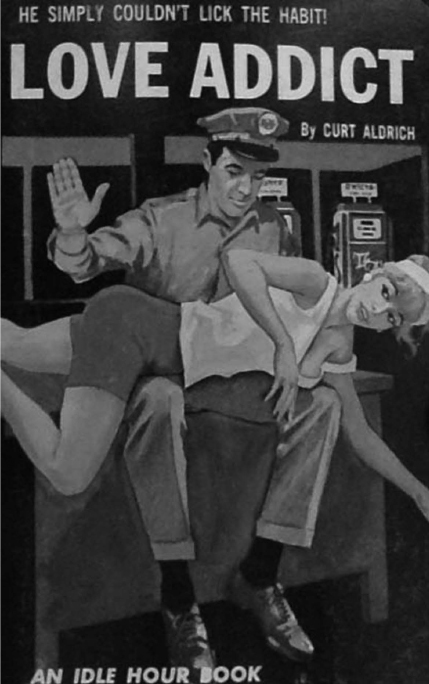
Curt Aldrich,
Love Addict (1966). Author's collection.
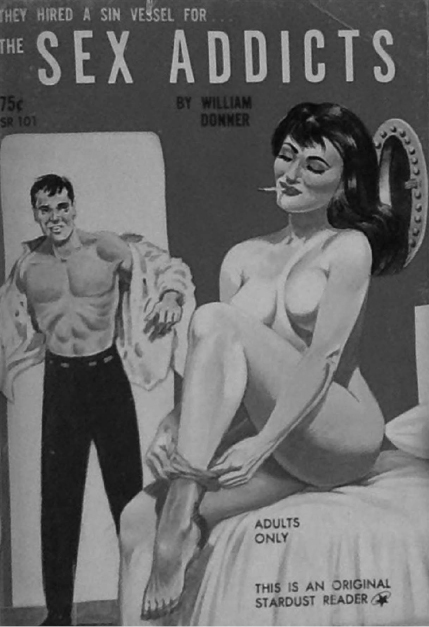
William Donner,
The Sex Addicts (1964). Author's collection.
Pulp fiction aside, we also know that homosexual psychotherapy patients were referring to sex heads in the sense of addicts in the 1960s: I'm not only a pot headI'm a sex headit's completely eaten into everything. In short, the term may have arisen independently at a more grassroots level. When we later discuss the intellectual origins and viability of the concept, it is worth recalling this evidence for its humble origins.
Conceptually, as we will see, Lawrence Hatterer and Stanton Peele in the US and Jim Orford in Britain played roles in the malady's history. The New York sex therapist Avodah Offit mentioned sex addicts in 1981 (immediately after a discussion of nymphomania and hypersexuality), citing a link between sex and the release of endorphins: Thus sex, in addition to whatever else it does, may actually reduce pain and promote euphoria in much the same fashion as small doses of the morphinelike drugs. The sex addict, then, may literally be a junkie, in one sense. However, the actual term sex addiction is most clearly associated with the work of the US psychologist Patrick Carnes and his book
Next page
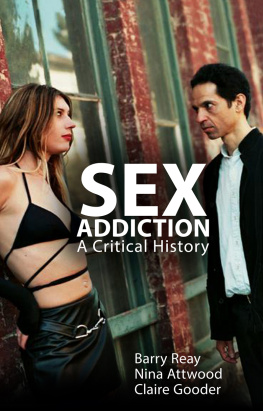




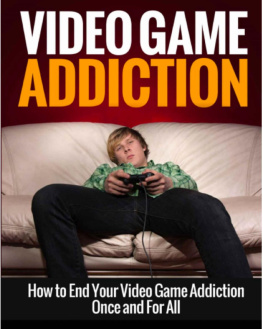
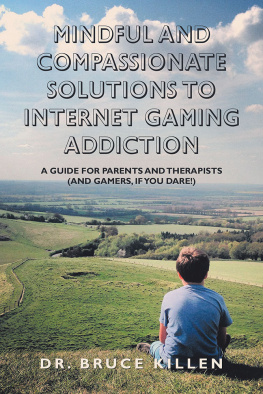

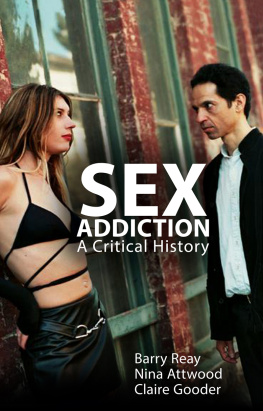



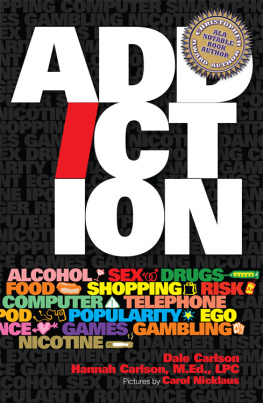


 Curt Aldrich, Love Addict (1966). Author's collection.
Curt Aldrich, Love Addict (1966). Author's collection. William Donner, The Sex Addicts (1964). Author's collection.
William Donner, The Sex Addicts (1964). Author's collection.